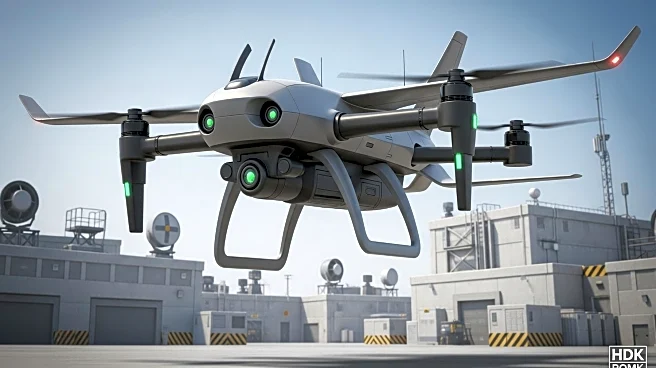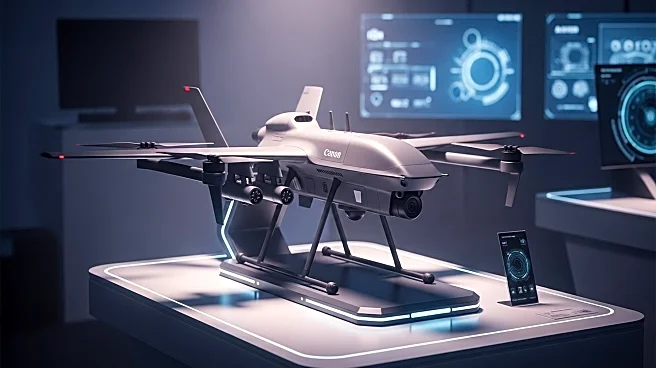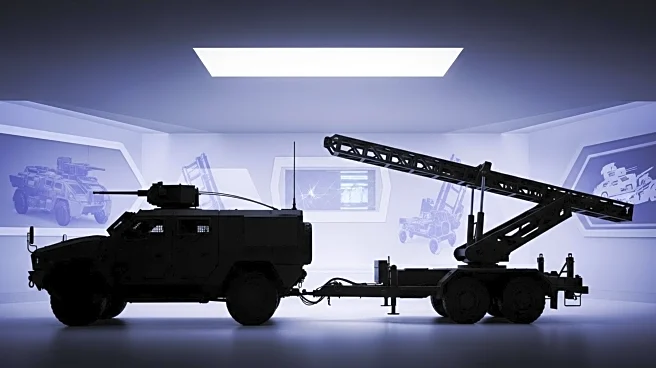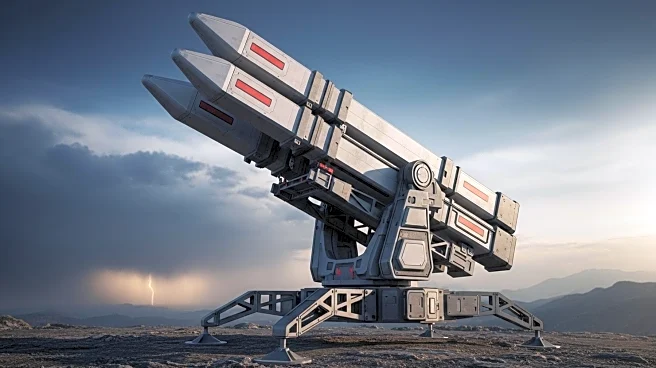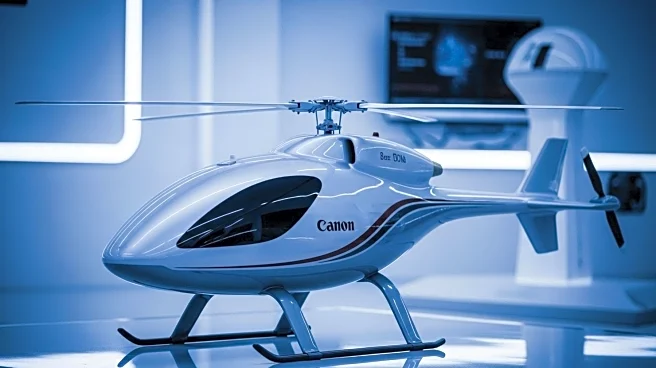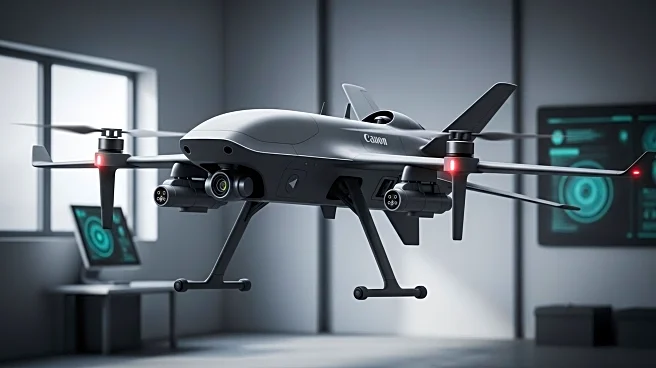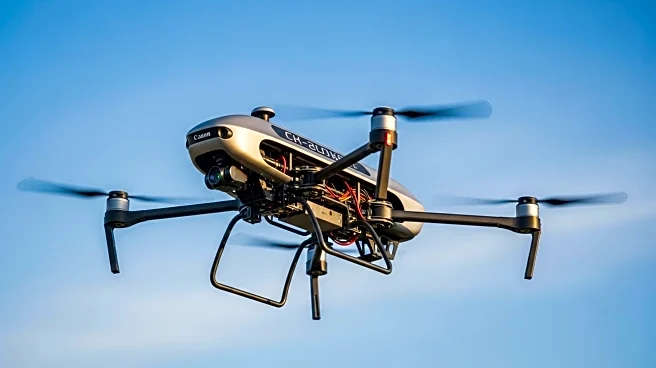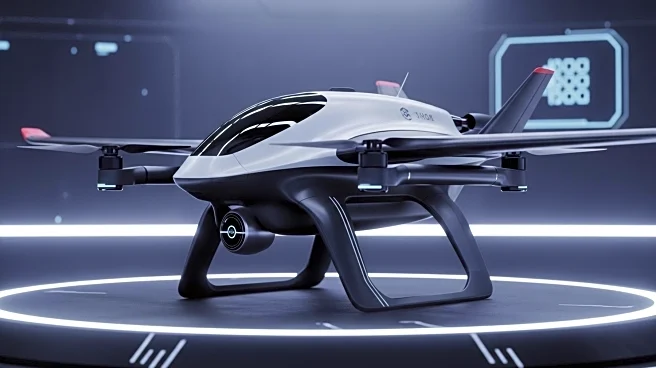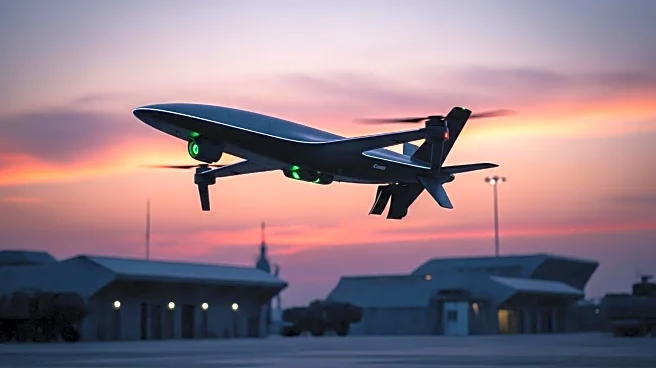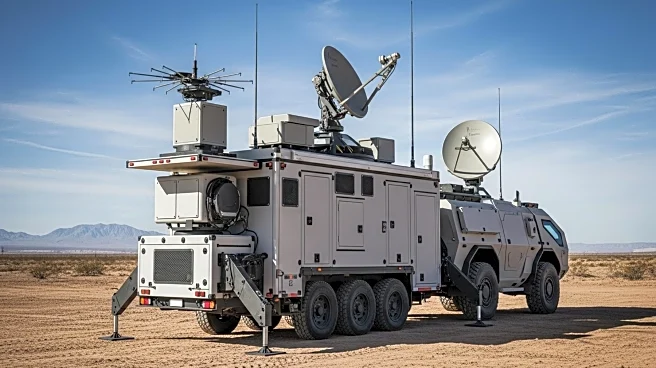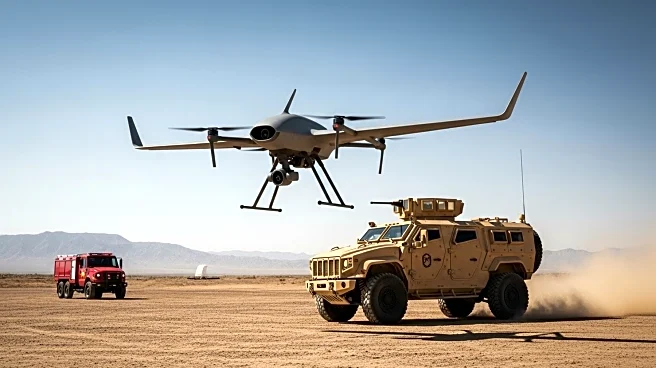What is the story about?
What's Happening?
AV, a company formed by the merger of AeroVironment and BlueHalo, has introduced the Switchblade 400, a new loitering munition designed for the US Army's Low Altitude Stalking and Strike Ordnance (LASSO) program. The announcement was made during the Association of the United States Army's (AUSA) annual conference in Washington, DC. The Switchblade 400 is positioned between the existing Switchblade 300 and 600 variants, offering a 40 km range and weighing under 40 lbs. It features a Javelin multi-purpose warhead and utilizes a tube-launched, rocket-assisted system for quieter and lighter deployment. The munition is equipped with an NVIDIA-based processor for automatic and aided target recognition, and its modular architecture allows for future upgrades in warheads and radio systems.
Why It's Important?
The introduction of the Switchblade 400 represents a significant advancement in the US Army's capabilities for unmanned anti-tank operations. By providing a lighter and more versatile munition, AV enhances the Army's ability to conduct precision strikes with reduced logistical burdens. The modular design ensures adaptability to evolving battlefield requirements, potentially increasing the effectiveness of military operations. This development could influence defense procurement strategies and impact the competitive landscape for military contractors specializing in loitering munitions.
What's Next?
The Switchblade 400's debut at AUSA 2025 suggests that AV is positioning itself as a key player in the US Army's future procurement plans. As the Army evaluates the munition's performance and compatibility with LASSO requirements, further testing and potential contract negotiations are likely. The Army's decision could set a precedent for future acquisitions of similar technologies, influencing the direction of unmanned weapon systems development.
Beyond the Headlines
The Switchblade 400's modular architecture highlights a trend towards more adaptable and customizable military technologies. This approach not only meets current operational needs but also anticipates future challenges, allowing for rapid integration of new capabilities. The focus on quieter and lighter launch systems reflects an ongoing shift towards minimizing battlefield noise and enhancing stealth operations, which could have broader implications for military tactics and strategy.
AI Generated Content
Do you find this article useful?
